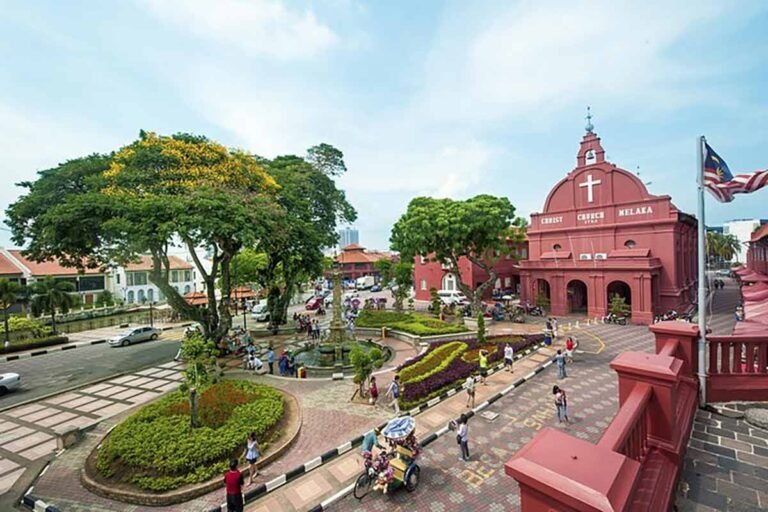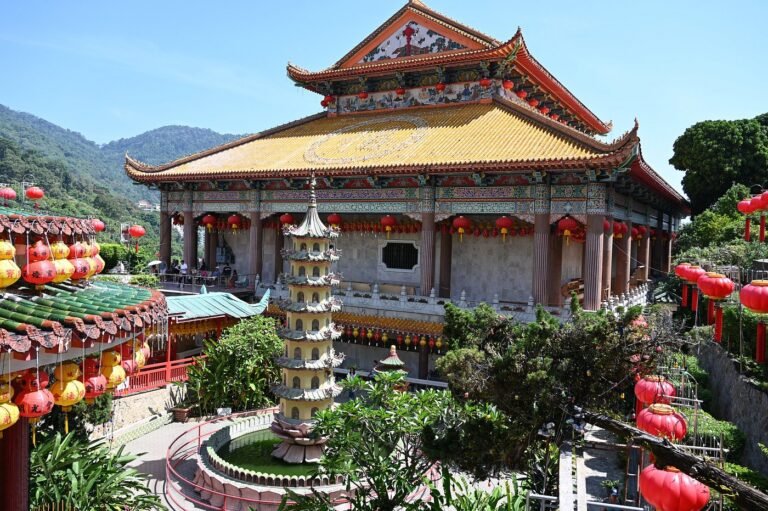Kuala Lumpur Batu Caves: How to Visit Malaysia’s Most Iconic Hindu Temple
If you’re visiting Kuala Lumpur, you absolutely can’t miss Batu Caves.
Located just 30 minutes from the city center, Batu Caves is one of Malaysia’s most important religious sites and a stunning natural wonder all in one. With its rainbow-colored stairway, enormous golden statue of Lord Murugan, and series of limestone cave temples tucked into a soaring cliff, Batu Caves is both deeply spiritual and visually unforgettable.
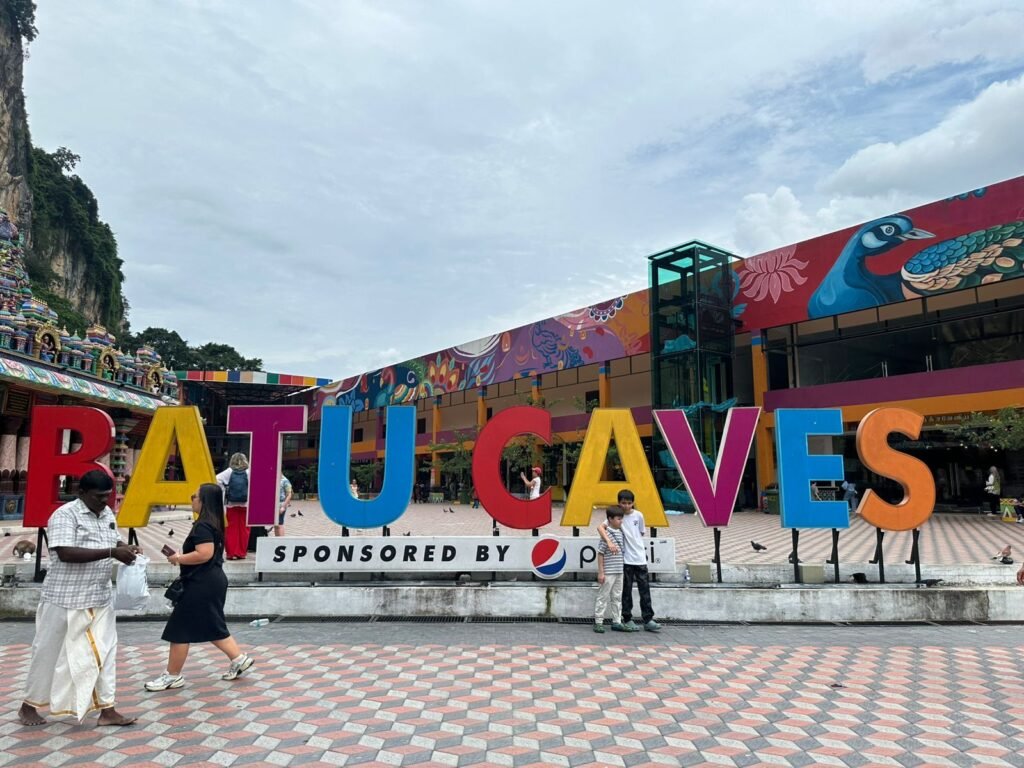
Over the years, I’ve visited Batu Caves many times—sometimes solo, sometimes with my kids in tow, and once during the famous Thaipusam festival when the entire complex turns into a vibrant spiritual pilgrimage site.
In this post, I’ll share how to get there, when to go, what to expect, and a few lesser-known tips to make your trip smooth and meaningful.
Quick Tips for Visiting Batu Caves
- 📍 Location: Gombak, Selangor – about 13 km north of downtown KL
- 🚆 How to Get There: Take the KTM Komuter train to “Batu Caves” station – it’s the last stop and just steps from the temple
- 🎟️ Entrance Fee: Free for the main cave temples (Dark Cave and Ramayana Cave have separate fees)
- 🕐 Best Time to Visit: Early morning to avoid crowds and heat
- 🧗♀️ What to Wear: Modest clothing (knees and shoulders covered). Sarongs are available for rent
- 🙈 Watch Out For: Monkeys! They’re adorable but love snacks and shiny things
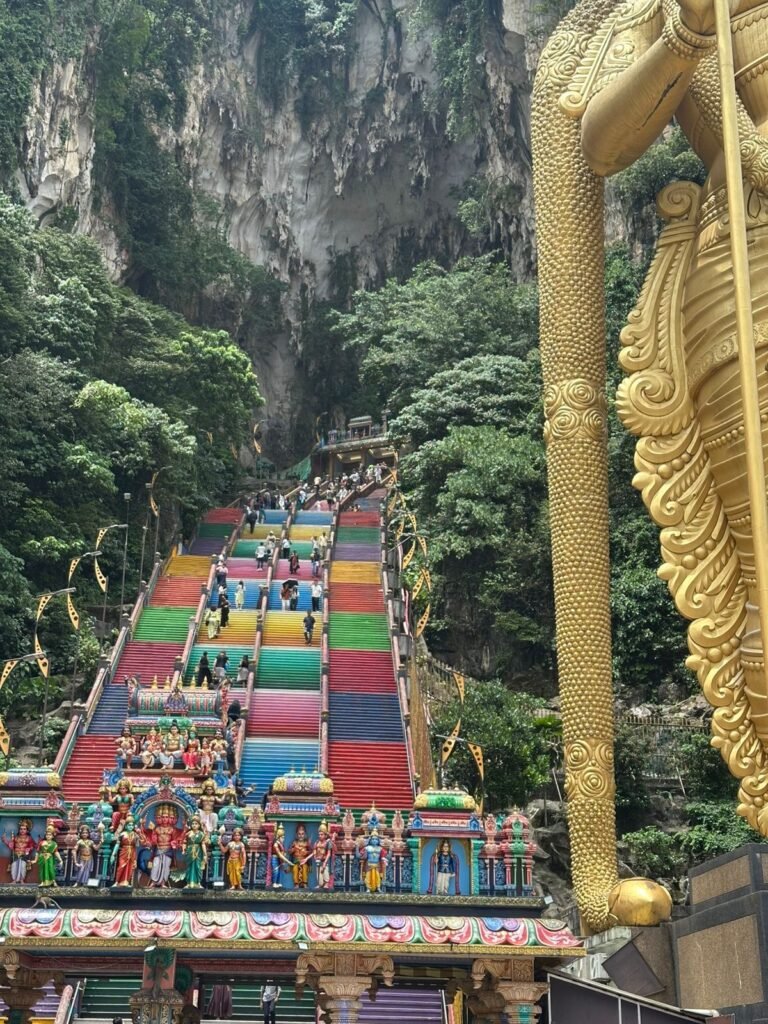
A Brief Introduction to Batu Caves
Batu Caves is a series of limestone caves nestled within a forested hill, believed to be over 400 million years old. It became a place of worship in the late 1800s when an Indian trader decided it would be the perfect spot to honor Lord Murugan, the Hindu god of war.
Today, the main attraction is the massive 42.7-meter golden statue of Lord Murugan—the tallest of its kind in the world—standing at the foot of a steep flight of 272 colorful steps leading to the Cathedral Cave (also called Temple Cave).
The site is not only a center of devotion for Malaysian Hindus, especially during the Thaipusam festival in January or February, but also one of the top day trips from Kuala Lumpur for tourists.
How to Get to Batu Caves
By Train:
The easiest and most budget-friendly way to get there is via the KTM Komuter line. Board at KL Sentral and ride all the way to Batu Caves station. The journey takes about 30 minutes and costs only a few ringgit. From the station, it’s less than a 5-minute walk to the cave complex.
By Car/Grab:
If you’re short on time or traveling in a group, taking a Grab (Southeast Asia’s version of Uber) is convenient and affordable. From Bukit Bintang or KLCC, the ride usually costs under RM 30 (USD 6).
Tours:
Prefer a guided experience? There are plenty of half-day or full-day Batu Caves tours that also include stops at the Royal Selangor Pewter Factory, batik workshops, or nearby hot springs. This is a great way to combine culture with convenience.
What to See at Batu Caves
1. The Rainbow Staircase and Lord Murugan Statue
This is the Instagram-famous shot you’ve probably seen a thousand times. But in person, it’s even more breathtaking. The 272 steps were painted in vivid hues in 2018, and the sheer scale of the golden Murugan statue standing guard at the base is humbling.
Take your time climbing the stairs—not just because it’s a bit of a workout, but because the view behind you gets better with each step.
2. Cathedral Cave (Temple Cave)
At the top of the staircase, you’ll enter a vast cavern with natural skylights and dripping limestone formations. This is where the main temple lies, complete with shrines, incense, and occasional rituals being performed.
If you’re lucky, you might see wild roosters strutting past offerings, or even a wedding ceremony unfolding inside.
3. Dark Cave (Currently Closed – Check Status)
Once open to the public with guided eco-tours, this cave is home to rare species of spiders and bats. It’s also a valuable conservation site. As of now, it’s temporarily closed for preservation efforts, so check before visiting.
4. Ramayana Cave
Located on the far left when you face the main staircase, this cave features a dramatic retelling of the Ramayana epic through vibrant statues and neon-lit dioramas. It’s open for a small fee and is a great bonus stop if you’re exploring at a relaxed pace.
What to Bring (and What to Leave Behind)
✅ Reusable water bottle
✅ Sunscreen & hat (shade is minimal until you reach the cave)
✅ Camera or phone for photos
✅ Small cash for donations or snacks
✅ Sarong or long wrap if you’re wearing shorts
❌ No food in hand—monkeys will find you
❌ Avoid loose jewelry or dangling bags—again, monkeys
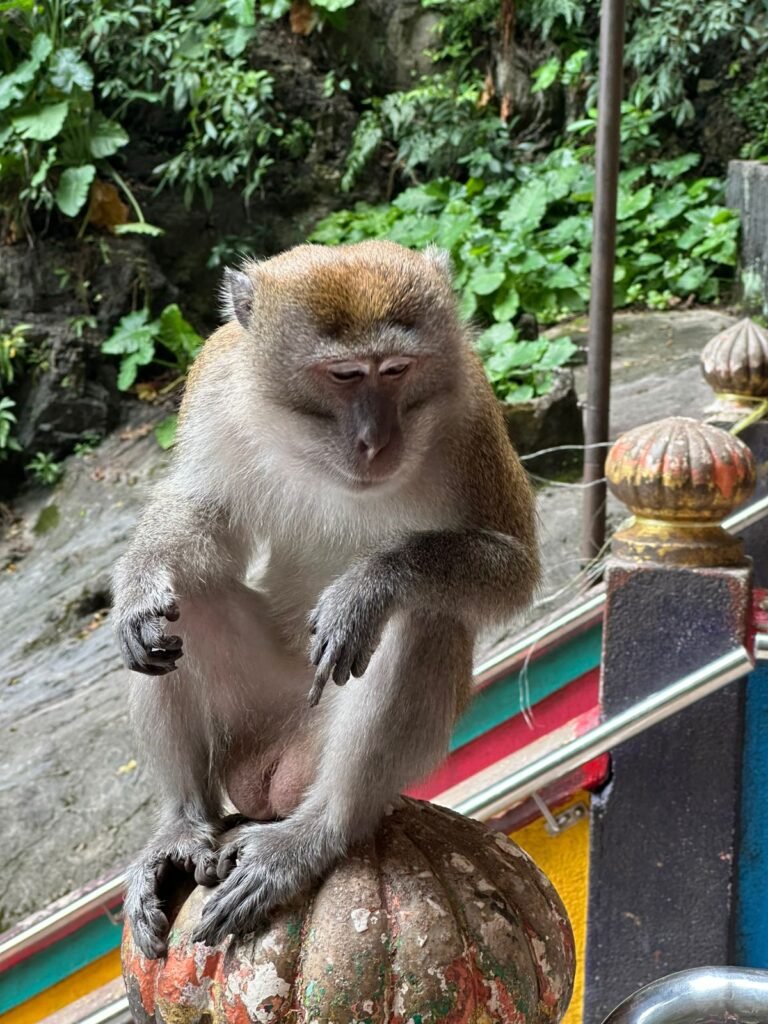
When to Visit Batu Caves
Early Morning (7–9 AM): Best time to beat the heat and crowds. You’ll also get the softest natural lighting for photos.
Thaipusam Festival (January/February): A deeply moving time to visit—but it gets extremely crowded. Devotees carry decorated “kavadi” up the steps, and the energy is electric. If you attend, go early, respect all rituals, and dress modestly.
Rainy Season (May–December): Bring an umbrella or poncho, especially in the afternoon. The limestone cliffs are even more atmospheric when draped in mist.
Where to Eat Nearby
While there’s not much inside the cave complex, you’ll find several vegetarian Indian eateries just outside the main gates, perfect for a post-hike banana leaf meal or masala dosa. For something more upscale, head back to KL and check out Brickfields (Little India) for a proper feast.
Final Thoughts
Batu Caves is one of those places that stays with you—whether it’s the spiritual ambiance, the striking visuals, or the playfulness of monkeys stealing from unsuspecting tourists.
Whether you’re visiting KL for a weekend or using it as a base to explore Malaysia, Batu Caves deserves a spot on your itinerary. It’s easy to reach, free to enter, and gives you a glimpse into Malaysia’s vibrant cultural blend—all within a natural wonder.



